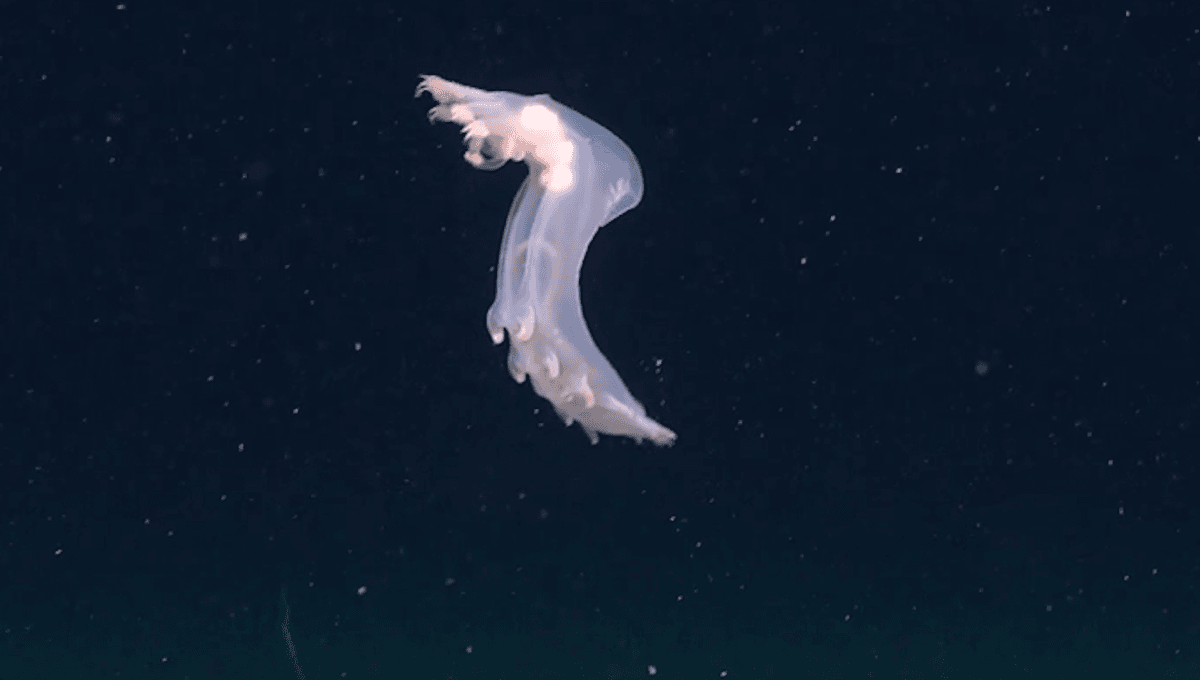All manner of deep ocean creatures live beneath the waves, from funky disco worms to octopuses and just about every manner of tentacled creature you can think of. Off the coast of Uruguay, a deep-sea chanchito, or sea pig, was recently recorded zooming past an underwater camera.
The rest of this article is behind a paywall. Please sign in or subscribe to access the full content. As part of the Uruguay SUB200 program, the remotely operated vehicle SuBastian aboard the Schmidt Ocean Institute’s Research Vessel Falkor (too) recorded a sea pig at a depth of 2,340 meters (7,677 feet) in the lower section of the José Ignacio submarine canyon. The beastie is thought to belong to the Scotoplanes genus, in the family Elpidiidae. They are not actually sea pigs, but rather sea cucumbers, marine invertebrates that usually have fivefold radial symmetry. Typically measuring between 4-15 centimeters (1.5-6 inches), sea pigs are most often found hoovering up detritus on the sea floor. They use their tentacles as a probe into the mud, looking for tasty morsels such as parts of dead animals and algae. When a whale fall occurs, for example, large numbers of these sea cucumbers can gather to feast on the carcass. According to research, some sea pigs spend time hanging out with juvenile lithodid crabs (Neolithodes diomedeae), who may use the sea pigs as a kind of defense from predators. They have even been spotted riding on top of the sea cucumbers. The SUB200 team were exploring the area to find out more about how deep-sea ocean currents interact and how that affects biodiversity in the area. Other species have been discovered over the years by SuBastian and the Falkor (too), including the pale pink Barbie sea pig and a sea pig from the coldest seeps of Chile. More recently, the ROV was also used to investigate strange halo rings that had formed around barrels dumped off the LA coast.






